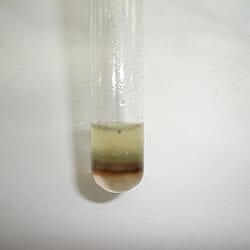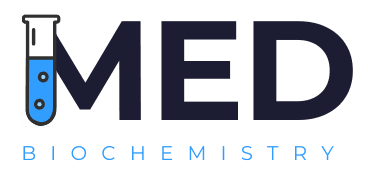
Image Credit – Hema
When it comes to identifying carbohydrates in biochemistry, Molischs test stands out as one of the simplest and most reliable methods. This test, discovered by the Czech-Austrian botanist Hans Molisch, is widely used in laboratories to detect the presence of carbohydrates in various samples. Whether you are a biology student, researcher, or simply curious about how scientists test for sugars, learning about Molischs test is essential.
Molischs Test – Principle, Procedure, and Applications

What is Molischs Test?
Molischs test is a qualitative chemical test used to detect carbohydrates in a solution. Carbohydrates, being organic compounds made of carbon, hydrogen, and oxygen, undergo specific chemical reactions that help in their identification. This test relies on the reaction of carbohydrates with concentrated sulfuric acid and α-naphthol, producing a characteristic violet or purple ring at the interface of the two liquids.
In simple terms, if a solution contains carbohydrates, Molischs test will give a positive result.
Principle
The principle of Molischs test is based on the dehydration of carbohydrates by concentrated sulfuric acid, which converts them into furfural or hydroxymethylfurfural derivatives. These compounds then react with α-naphthol, forming a purple or violet-colored complex.
- Monosaccharides, disaccharides, and polysaccharides all respond positively.
- Even glycoproteins and glycolipids can give a positive result due to their carbohydrate content.
This makes Molischs test a general test for carbohydrates rather than a specific one.
Reagents Required
- Molisch’s reagent – prepared by dissolving α-naphthol in ethanol.
- Concentrated sulfuric acid (H₂SO₄) – acts as a dehydrating agent.
- Sample solution – the test solution suspected of containing carbohydrates.
Procedure
- Take 2 ml of the sample solution in a test tube.
- Add 2–3 drops of Molisch’s reagent (α-naphthol solution).
- Carefully pour 1 ml of concentrated sulfuric acid along the side of the test tube without mixing.
- Observe the interface between the two liquids.
If a violet or purple ring forms at the junction, the test is positive for carbohydrates.
Result Interpretation
- Positive result: Formation of a violet or purple ring at the interface indicates the presence of carbohydrates.
- Negative result: No color change or ring formation means carbohydrates are absent in the sample.
This makes Molischs test a quick screening method in carbohydrate analysis.
Applications
The versatility of Molischs test makes it widely applicable in laboratories, research, and education. Some common applications include:
- Detection of carbohydrates in biological fluids like blood, urine, or plant extracts.
- Screening of food samples for sugars and starches.
- Educational demonstrations in schools and colleges to explain carbohydrate chemistry.
- Preliminary analysis in research before moving to more specific carbohydrate tests like Benedict’s test, Barfoed’s test, or Seliwanoff’s test.
Limitations
Although Molischs test is highly reliable for carbohydrate detection, it has some limitations:
- It cannot distinguish between different types of carbohydrates.
- Non-carbohydrate compounds like glycoproteins and glycolipids can also give a positive result.
- The test is qualitative, not quantitative.
Thus, further confirmatory tests are usually needed.
Molischs test remains one of the most important preliminary tests in carbohydrate analysis. Its simplicity, quick results, and reliability make it a preferred choice in biochemistry labs. While it does not provide detailed information about the type of carbohydrate, it is an excellent starting point for further investigations. Have you ever performed Molischs test in your lab sessions? Share your experience in the comments below – we’d love to hear your story.
Frequently Asked Questions
What is the principle of the Molisch test?
The principle of the Molisch test is based on the dehydration of carbohydrates by concentrated sulfuric acid, which produces furfural or hydroxymethylfurfural. These compounds then react with α-naphthol present in Molisch’s reagent to form a violet or purple-colored complex. This reaction indicates the presence of carbohydrates in the test sample.
Why is the Molisch test called a general test for carbohydrates?
The Molisch test is called a general test because it detects all types of carbohydrates, including monosaccharides, disaccharides, and polysaccharides. Even carbohydrate-containing compounds like glycoproteins and glycolipids give a positive result. This makes it a universal test for the presence of carbohydrates, though it cannot identify their specific type.
What are the applications of Molischs test in real life?
The Molischs test is mainly used in real life to quickly detect carbohydrates in various samples. It is applied in biological testing of fluids like blood and urine, in the food industry to check for sugars and starches, in educational labs for teaching carbohydrate chemistry, and in research labs as a preliminary screening before carrying out more specific carbohydrate tests.

